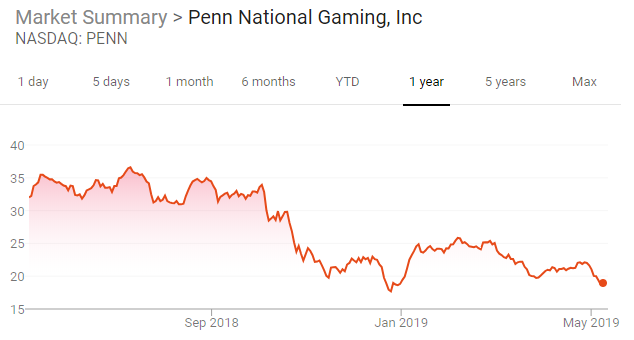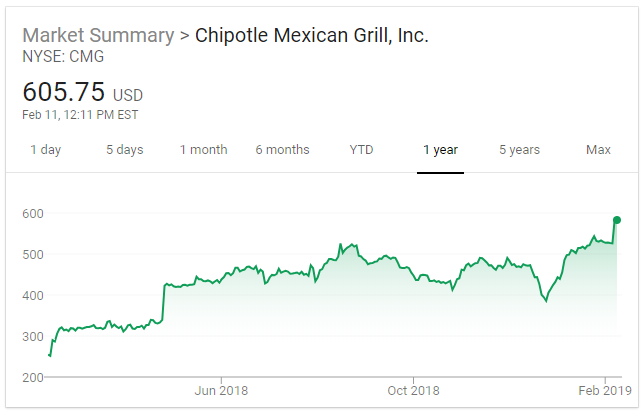First, there was cannabis seller Tilray (TLRY), which saw its stock price peak at $300 per share just a few months after a mid-2018 IPO that priced at $17. A buying frenzy among individual/retail investors resulted in a more than 17-fold surge, but as it usually the case, sanity returned. Today TLRY can be purchased in the 40's.
This chart does not show the intra-day high of $300 but it did indeed peak at that price
With the cannabis craze now passed, as well as that of bitcoin, which stole the show in 2017, we have another round of exuberance with Beyond Meat (BYND), the plant-based meat alternative seller which priced its IPO at $25 last month and this week topped $200 per share.
While I lacked helpful fundamental insights into TLRY, outside of the always important valuation discussion, the "alt-meat" sector is something I know a little about because my wife is a vegetarian and we typically have very little in the way of actual meat products in our house. As a result, over the last decade or so we have tried most of the products out there. Some impress, others do not.
What I find perhaps most interesting about the last month is that because BYND is the first pure play plant-based meat alternative company to go public, those who follow the financial markets (but don't eat the products), seem to think that this market is brand new and that BYND (and fellow upstart Impossible Foods) are the first two companies to launch plant-based meat products. If there was indeed some sort of first-mover advantage, and the market for these items was brand new and growing like crazy, I guess one could justify paying a huge valuation for BYND. Though I think the current $10 billion equity value is beyond rich for even such a scenario.
The problem with that viewpoint is that plant-based burgers, ground beef, and chicken nugget alternatives are not new. Brands like Morningstar Farms, Quorn, Lightlife, Gardenburger, Boca, Field Roast, and Gardein have been at this game for a long time. In fact, market leader Morningstar Farms (owned by Kellogg), with annual sales estimated at $750 million, was started all the way back in 1975!
I suspect that people are noticing them more today because both Beyond and Impossible have been aggressively marketing their products and have succeeded in getting them on restaurant menus over the last couple of years (the legacy brands have typically focused on grocery store distribution). Sure, there are more vegetarians and vegans today than there were 20 or 30 years ago, but it would be a mistake for investors to assume that a couple of new companies are going to dominate the market and have no competition.
The market size is also an interesting topic, because in 2017 only 3% of Americans identified as vegan or vegetarian. If 5 companies battle each other for maybe ultimately 5% of the meat market in the U.S., it might be hard for investors to justify anywhere near a $10 billion market value for BYND, let alone a handful of players combined.
Some people are saying that meat eaters will eventually become big customers, but I doubt that will be true. Surely there will be some, as I enjoy many of the items with my wife (even though I do eat meat, poultry, and fish at restaurants), but I don't think specific situations like ours will be all that common, even five years from now.
So while these products are real, in many cases quite tasty, and the businesses are growing, the stock valuations are clearly out of whack. There is no way BYND is worth $10 billion when Kellogg's equity is valued at $19 billion and Conagra (the owner of Gardein) is worth $14 billion. Those companies have total annual revenue of $13 billion and $10 billion, respectively, while Beyond is projected to book sales of $300 million in 2020.
Much like cryptocurrencies and cannabis, many investors seem to be overestimating the alt-meat market opportunity (through insane stock market valuations). This is not to say there won't be winners and profits won't be made, but in a rush to want to own shares of what could be the "next big thing" valuation gets thrown out the window in favor of momentum and excitement. That typically does not end well. After all, the saying "buy low, sell high" was never shortly replaced by "buy high, sell higher" mainly because that strategy rarely works over the long term. Tilray speculators learned that and I suspect BYND bulls will as well.
Lastly, if you are curious and want to try some of the legacy alt-meat products (and compare them with BYND to see if they really have a better mouse trap), here are our favorites:











